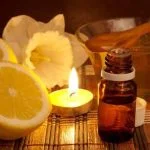Are you looking to create a calming and therapeutic outdoor space? Aromatherapy garden plants may be just what you need. In this article, we will explore the world of aromatherapy garden plants, their benefits, how to choose the right ones, and how to design and care for your very own aromatic garden.
Aromatherapy has been used for centuries as a natural way to promote relaxation, reduce stress, and improve overall well-being. By incorporating specific plants into your garden, you can create a serene and soothing environment that not only looks beautiful but also offers a variety of aromatherapeutic benefits.
When it comes to choosing the right aromatherapy garden plants, it’s important to consider factors such as climate, available space, and personal preferences. Whether you’re new to gardening or have a green thumb, there are plenty of options available for every skill level. From lavender and rosemary to chamomile and peppermint, the possibilities are endless.
In the following sections, we will delve deeper into the benefits of aromatherapy, tips for choosing the right plants, and a list of top 10 aromatherapy garden plants perfect for beginners. Whether you have a large backyard or a small balcony, creating your own aromatherapy garden is within reach. Get ready to transform your outdoor space into a relaxing haven filled with delightful scents and natural healing properties.
The Benefits of Aromatherapy
Aromatherapy has been used for centuries as a natural way to promote relaxation, improve mood, and support overall well-being. The practice involves using essential oils from aromatic plants to enhance physical and mental health. There are various benefits to incorporating aromatherapy garden plants into your daily routine, ranging from stress reduction to improved sleep quality.
Health Benefits
Aromatherapy has been shown to have several health benefits, including reducing anxiety, easing depression, and improving quality of sleep. Certain aromatherapy garden plants, such as lavender and chamomile, can help alleviate stress and promote relaxation, while others like peppermint and eucalyptus can help relieve congestion and headaches. By cultivating these plants in your garden, you can easily access their therapeutic properties whenever needed.
Emotional Well-Being
In addition to physical health benefits, aromatherapy garden plants can also positively impact emotional well-being. Scents like jasmine and rose have uplifting properties that can help elevate mood and reduce feelings of sadness or tension. The simple act of tending to your aromatic garden can also provide a sense of tranquility and calm, contributing to an overall sense of well-being.
Natural Healing
Many people are turning to natural remedies for healing purposes, and aromatherapy is one such approach that is gaining popularity. Aromatherapy garden plants offer a natural alternative to synthetic fragrances and chemical-based products. By harnessing the healing power of essential oils through growing your own aromatic plants, you can create a more sustainable and eco-friendly approach to holistic wellness.
Choosing the Right Aromatherapy Garden Plants
When it comes to creating an aromatherapy garden, choosing the right plants is crucial. Not all plants are suitable for aromatherapy, so it’s important to select ones that have the right fragrances and therapeutic properties. Here are some tips for choosing the right aromatherapy garden plants:
1. Research: Before you start planning your aromatherapy garden, do some research on which plants are commonly used in aromatherapy. Look for plants that have calming, uplifting, or soothing scents, as these are often used for their therapeutic benefits.
2. Consider your needs: Think about what kind of scents you enjoy and what specific therapeutic benefits you are looking for. For example, if you want to create a calming space, you might look for plants with lavender or chamomile scents. If you’re looking for energizing scents, consider plants like peppermint or eucalyptus.
3. Climate and growing conditions: Make sure to choose plants that will thrive in your climate and growing conditions. Some aromatherapy garden plants require specific care and growing conditions, so it’s important to choose ones that will be well-suited to your environment.
Once you’ve chosen the right aromatherapy garden plants, you can begin planning and designing your garden space to create a relaxing and therapeutic retreat in your own backyard.
Top 10 Aromatherapy Garden Plants for Beginners
When it comes to creating an aromatherapy garden, choosing the right plants is essential. Whether you are looking to improve your mood, reduce stress, or simply enjoy the pleasant scents, selecting the right aromatherapy garden plants is crucial. For beginners, it is important to start with plants that are easy to grow and maintain. Here are the top 10 aromatherapy garden plants for beginners.
Lavender
Lavender is perhaps one of the most popular aromatherapy garden plants due to its soothing and calming properties. It is relatively easy to grow and can thrive in various climates. Lavender can be used in sachets, bath salts, or as a natural air freshener.
Rosemary
Rosemary not only adds flavor to your culinary dishes but also has several aromatherapy benefits. Its invigorating scent can help improve concentration and memory. This plant thrives in warm, sunny conditions and requires minimal maintenance.
Peppermint
Peppermint is known for its refreshing and uplifting aroma. It can be used to alleviate headaches and boost energy levels. However, it’s important to note that peppermint can be invasive, so it’s best to plant it in a contained area or pot.
These are just a few examples of aromatherapy garden plants that are suitable for beginners. When planning your aromatic garden, consider factors such as sunlight requirements, soil conditions, and climate suitability for each plant. With proper care and maintenance, you can create a beautiful and fragrant space filled with beneficial aromatherapy garden plants.
How to Design and Plan Your Aromatherapy Garden
Designing and planning your aromatherapy garden is an exciting and therapeutic process that will allow you to create a space tailored to your specific needs and preferences. Here are some important steps and considerations to keep in mind as you embark on this journey:
1. Determine the Purpose of Your Garden:
Before you begin designing your aromatherapy garden, it’s important to consider how you intend to use the space. Are you looking to create a peaceful retreat for relaxation and meditation? Or do you want to cultivate plants for their aromatic properties to use in essential oils or herbal remedies? Understanding the primary purpose of your garden will help guide your design choices.
2. Research Aromatherapy Garden Plants:
Familiarize yourself with different types of aromatherapy garden plants and their specific benefits and growing requirements. Consider factors such as climate, soil conditions, sunlight exposure, and water needs when selecting plants for your garden. Some popular options for beginners include lavender, rosemary, chamomile, mint, and lemon balm.
3. Create a Layout Plan:
Once you’ve selected the plants you’d like to include in your aromatherapy garden, it’s time to create a layout plan. Consider the size of your space, the growth habits of the plants, and any potential interactions between different species. You may want to arrange plants in clusters based on their therapeutic properties or create distinct zones within the garden for relaxation, meditation, and plant maintenance.
By following these steps and taking the time to carefully design and plan your aromatherapy garden, you can create a beautiful and functional space that promotes health and well-being through the power of scent and nature.
Caring for Aromatherapy Garden Plants
When it comes to caring for aromatherapy garden plants, it is important to remember that these plants require specific attention in order to thrive and provide the best aromatic experience. One of the most important aspects of caring for these plants is ensuring that they are planted in well-draining soil, as waterlogged roots can lead to various issues such as root rot. Additionally, providing the right amount of sunlight is crucial, as different plants have varying light requirements.
Regular pruning and deadheading are essential tasks when caring for aromatherapy garden plants. This not only helps maintain the plant’s shape and health but also encourages new growth and the production of aromatic compounds. Proper watering is also key; while some plants require consistent moisture, others prefer drier conditions. Understanding the specific needs of each plant will help ensure its overall well-being.
Furthermore, keeping an eye out for pests and diseases is important when caring for aromatherapy garden plants. Using natural remedies or organic pest control methods can help protect these plants without compromising their aromatic properties. By taking these steps, you can maintain healthy and thriving aromatherapy garden plants.
| Aspect of Caring | Key Considerations |
|---|---|
| Soil | Well-draining soil to prevent root rot |
| Light | Understanding each plant’s specific light requirements |
| Maintenance | Regular pruning and deadheading |
| Watering | Adjusting watering based on individual plant needs |
Harvesting and Using Aromatherapy Garden Plants
Once you have successfully grown a variety of aromatherapy garden plants, it’s important to know how to properly harvest and use them for their therapeutic benefits. The best time to harvest these plants is in the morning after the dew has evaporated but before the sun is at its peak. This is when the aromatic oils are at their strongest.
When harvesting your aromatherapy garden plants, it’s important to use clean and sharp gardening shears to prevent damage to the plant. Be sure to only take what you need, as overharvesting can harm the plant and affect future growth. Once harvested, you can use the leaves, flowers, or stems for various applications such as essential oils, herbal teas, potpourri, or homemade skincare products.
Each aromatherapy garden plant has its own unique properties and uses. For example, lavender is known for its calming and relaxing properties and can be used to make soothing bath salts or sleep-inducing pillows. Peppermint is great for relieving headaches and nausea and can be made into an invigorating massage oil or added to teas. It’s important to research each plant and experiment with different methods of use to find what works best for you.
| Plant | Common Uses |
|---|---|
| Lavender | Calming bath salts, sleep-inducing pillows |
| Peppermint | Relieving headaches, nausea; massage oil ingredient |
| Rosemary | Improving focus and memory; culinary herb |
Creating a Relaxing Aromatherapy Garden Space in Your Home
In conclusion, incorporating aromatherapy garden plants into your home can bring a myriad of benefits. From promoting relaxation and reducing stress to improving mental clarity and boosting overall well-being, the use of these plants in your living space can truly enhance your quality of life.
By carefully choosing the right aromatherapy garden plants and creating a thoughtful design and plan for your garden, you can cultivate a tranquil and inviting space that serves as a retreat from the stresses of daily life.
When it comes to selecting the best aromatherapy garden plants for beginners, consider options like lavender, rosemary, and chamomile, which are not only easy to care for but also have powerful aromatic properties. With proper care and maintenance, these plants can thrive indoors or outdoors, providing you with an abundant source of natural fragrance and therapeutic benefits. Remember that caring for your aromatherapy garden plants requires attention to their specific needs such as sunlight, water, and soil conditions.
Ultimately, creating a relaxing aromatherapy garden space in your home should be a rewarding and enjoyable experience. Whether you have a spacious backyard or just a small balcony, incorporating these fragrant plants into your living environment can significantly contribute to a soothing atmosphere. With dedication and patience, you can create a personal oasis that promotes both physical and emotional well-being through the power of nature’s healing scents.
Frequently Asked Questions
What Herbs Are Good for Aromatherapy Garden?
Some commonly used herbs for an aromatherapy garden include lavender, rosemary, chamomile, peppermint, and lemon balm. These herbs not only add fragrance to the garden but also have therapeutic properties.
What Plants Are Used in Aromatherapy?
A variety of plants are used in aromatherapy, including lavender, eucalyptus, rosemary, chamomile, and tea tree. These plants have essential oils that are extracted and used in aromatherapy practices for their healing properties.
How Do You Grow an Aromatherapy Garden?
To grow an aromatherapy garden, start by choosing a sunny spot with well-drained soil. Select herbs and plants known for their aromatic and medicinal qualities. Provide proper care by watering regularly, pruning when needed, and ensuring they receive adequate sunlight. With time and attention, your garden will flourish into a fragrant oasis of therapeutic plants.

Are you looking for a natural way to improve your health and wellbeing?
If so, aromatherapy may be the answer for you.





